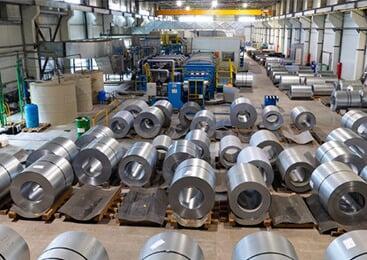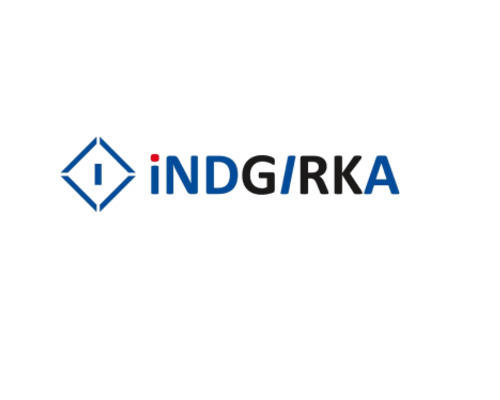Stainless steel sheets are possibly the most precious commodity used in the manufacturing of the contemporary world, building construction, vehicles, and household purposes. They are everywhere and ubiquitous as they are due to their symbiotic affinity with corrosion resistance, strength, versatility, and aesthetics. But then what exactly is a stainless steel sheet? Why is it so remarkable? And where is it used?

In this detailed guide by the Stainless Steel Sheet Metal Parts Manufacturer, we are going to be talking about absolutely everything one should know regarding stainless steel sheets—right from their nature and composition to their wide application in industries.
What is a Stainless Steel Sheet?
A stainless steel sheet is a flat-rolled steel product consisting mainly of iron, chromium, and other alloying elements. It is in the form of 0.4 mm to 6 mm thickness. Below that is a foil, and the heavier ones are plates of stainless steel.
The quality of stainless steel is that it is not corroded easily. The quality resides primarily due to the fact that the material contains a minimum of 10.5% chromium. The chromium reacts with the oxygen present in the environment to create a very thin, translucent layer of chromium oxide on the steel that is rust and corrosion resistant even under extreme conditions.
The stainless steel sheets may also be hot-rolled or cold-rolled, and cold-rolling will need to be chosen in case tighter tolerance and improved surface finish are needed. They also come in various finishes, such as satin, mirror, brushed, and matte, based on their application.
Structure of Stainless Steel Sheet
The structure of the alloy of the stainless steel sheet depends on the grade but all the stainless steels contain:
- Chromium (Cr)—Generally 10.5% to 30%, corrosion-resistant.
- Nickel (Ni)—Increases and strengthens corrosion resistance.
- Carbon (C)—For a small percentage to provide strength.
- Manganese (Mn), Silicon (Si), Molybdenum (Mo), etc.— These provide certain specific properties like formability, heat resistance, or pitting resistance.
General Grades of Stainless Steel Sheets:
304 Stainless Steel
- Composition: Approximately 18% chromium and approximately 8% nickel.
- Properties: Good corrosion resistance, easy to form and weld.
- Application: Kitchen appliances, food processing, cladding.
316 Stainless Steels
- Chemistry: Contains ~2-3% molybdenum.
- Properties: Excellent chloride and marine environment corrosion resistance.
- Applications: Marine equipment, chemical processing equipment, and medical equipment.
430 Stainless Steel
- Chemistry: Chromium only, no nickel.
- Properties: Slightly higher corrosion resistance than 304 but less; less costly.
- Applications: Car trim, kitchen backsplashes, appliances.
410 Stainless Steel
- Chemistry: Higher carbon content chromium.
- Properties: Hard, tough, medium corrosion resistance.
- Applications: Cutlery, fasteners, valves.
Key Characteristics of Stainless Steel Sheets
- Corrosion Resistance: It is the most corrosion-resistant stainless steel. Surface chromium oxide coating protects the underlying metal against corrosion and rust even in wear-and-tear applications, like exposure to chemicals, seawater, or wetness.
- Strength and Durability: Stainless steel is extremely hard and tough. It is never exhausted even at high pressure, heavy loads, or under high heat.
- Heat and Fire Resistance: Stainless steel sheets are corrosion-resistant and can also withstand very high levels of temperature without deteriorating due to alloying elements like molybdenum and chromium and are thus appropriate for boilers, engine parts, and heat exchangers.
- Easy to Clean and Sanitary: It is pore-free and will therefore never provide a living space for bacteria and mold. It is therefore the best choice in hygienically demanding industries such as health care, food production, and pharmacy.
- Aesthetic Appeal: Finishing from gloss mirror to textured matte is also found in stainless steel sheets, which provide a clean, high-tech look for architectural and interior design applications.
- Weldability and Shapability: Depending on the type of alloy, stainless steel plates are relatively easy to shape, form, cut, and weld, thus very versatile in an attempt to accommodate different manufacturing processes.
General Applications of Stainless Steel Plates
Due to its inherent characteristics, stainless steel sheets find applications within a wide range of applications in various industries.
1. Architecture and Construction
- Roofing, cladding, façades
- Staircase panels, handrails, stairs
- Decorative trimmings and screens
- Stainless steel provides strength and will provide a pleasing finish and endure weathering and corrosion if exposed to the elements.
2. Kitchen and Food
- Counters, sinks, backsplashes
- Refrigerators, ovens, dishwashers
- Food-preparation surfaces and food storage containers Stainless steel is used because it's clean, easy to sterilize, and will not react with food.
3. Transportation and Automotive
- Exhausts, grilles, trim
- Interior of bus and train
- Structural parts used in trailers and trucks
- Hardness and resistance to weather make stainless steel ideal for application on public transport and cars.
4. Pharmaceutical and Medical
- Surgery trays, trolleys, instruments
- Hospital beds, sinks, sterilizing equipment
- Laboratory equipment and laboratory work surfaces
- Its resistance to heavy chemicals chemically and extensive use by cleaning cannot be overmatched in such industries.
5. Chemical and Energy Processing
- Pressure tanks and vessels
- Heat exchangers
- Chemical, oil, and gas piping
- Desalination plants
316 stainless steel finds widespread application in the case of overexposure to chlorides or acids.
6. Household and Interior Design
Lighting fixtures, Furniture Wall panels, paintings, Bathroom and kitchen fittings It has a clean look but is strong and requires no upkeep. Stainless Steel Sheet Finishes Finishing stainless steel sheet is critical to appearance, performance, and usage. One of the most generic is
- 2B Finish—Shiny, smooth finish; typical mill finish. BA (Bright Annealed)—Reflective and shiny; used for use in appliances.
- No. 4 (Brushed Finish)—Fine-grained; used in huge quantities of kitchen finishes.
- Mirror Finish (No. 8)—Highly reflective; used where appearance is a concern. Benefits of Stainless Steel Sheets:
- Long Service Life—Resistant to impact, wear, and corrosion.
- Low Maintenance – Durable and does not require protective coating.
- Recyclable—100% recyclable with very little ecological footprint.
- Fire and Heat Resistant—Strength is maintained even under high heat. Aesthetic diversity – Is the result of numerous textures and finishes.
Conclusion
Stainless steel sheets are the new material science miracle—conferring an unprecedented mix of power, corrosion resistance, purity, and beauty. Applied in the advanced kitchen, skyscraper, or operating theatre, this very versatile material performs and delivers. Having knowledge of the grade, properties, and applications of stainless steel sheets, manufacturers, engineers, and designers can select the appropriate grade and finish to meet their own particular requirements. With ongoing technological advancements and mounting pressures for sustainable, durable materials, stainless steel sheets will remain at the forefront of the construction industry and infrastructure globally. Apart from this, if you need more detail, then you can get in touch with professionals of Indgirka right away.
Also Read: Why Choose Aluminium for Automotive Parts?
